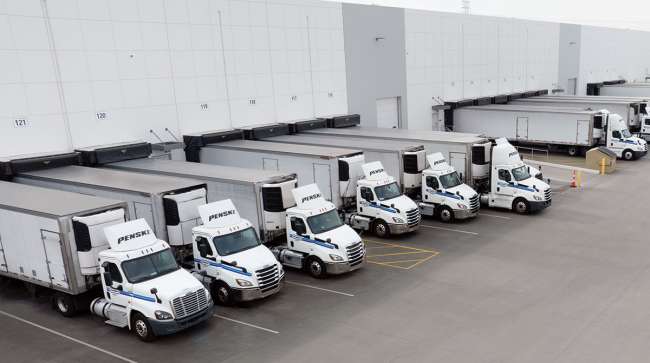In the face of ever-changing tariffs and uncertain international trade policies, transportation and warehousing companies are grappling with a volatile business environment, disrupted supply chains, and shifts in inventory strategies and consumer behavior.
"Have you heard of Covid two?", John Janson, Vice President of Global Logistics at apparel distributor SanMar, quipped. "The current tariff situation is a real storm for our company," he added.
To cope, SanMar has adopted a two-pronged strategy: shifting goods between countries and proactively bringing goods from countries at risk of high tariffs back to the US before new tariffs take effect. According to Janson, SanMar is also gradually withdrawing from China, minimizing its reliance on supply sources there.
"We're constantly balancing market demand and cost," he shared. "Uncertainty is the worst thing for the supply chain, and our team continually has to adjust our strategy."
To avoid shortages, SanMar has established three main warehouse hubs in Virginia, Ohio, and Nevada, which serve as anchor points. "The goal is to ensure these hubs always have core items in stock. If we need to replenish stock elsewhere, we'll transfer it from these three hubs instead of having to piece it together from multiple locations," he explained.
According to Janson, about 90% of SanMar's orders are placed at the end of the day and shipped out that same evening. "It might sound unbelievable, but our industry does have T-shirt emergencies," he joked.
 |
Many shippers are applying lessons learned from the disruptions caused by the Covid pandemic to the current situation. Photo: TTNews |
Many shippers are applying lessons learned from the disruptions caused by the Covid pandemic to the current situation. Photo: TTNews
A flexible network structure is paramount.
Echoing this sentiment, Andy Moses, Senior Vice President of Sales Strategy at Penske Logistics, observed, "Companies are reevaluating their entire supply network and reconsidering where to locate warehouses and how to choose their suppliers."
He cited the example of an e-commerce retail client who imports 90% of their goods from China and is significantly impacted by the new tariff policy.
"Operators are no longer surprised by supply chain disruptions because Covid-19 taught them how to be flexible and build greater resilience," Moses stated. "We see businesses prioritizing agility, responsiveness, and choosing the optimal transportation model to serve their existing warehouse network."
Another trend is the combination of dedicated and multiclient warehouses. "Not everyone needs a massive private warehouse; sometimes, renting part of a space from a third party is sufficient. It saves costs and increases adaptability to market demands," Moses analyzed.
Companies with complex and service-sensitive supply chains often choose long-term strategic partners over the cheapest options. "Some customers only look for the lowest price, but other businesses understand that operational efficiency is the long game," he added.
Managing demand in a volatile world.
Noah Hoffman, Vice President of North American Surface Transportation at C.H. Robinson, noted that forecasting demand in this period is extremely difficult, especially for retailers. They are seeking more granular inventory management methods to avoid passing on high production and tariff costs to consumers.
According to Hoffman, instead of managing by shipment, many businesses are shifting to item-level management for more accurate forecasting. "We've seen a doubling in the volume of transactions through C.H. Robinson's item-level order management tools."
A prominent issue is the lack of visibility into the inbound supply chain. "Many retailers purchase goods as a package deal from suppliers, including warehousing and transportation, so the supplier is the one who knows where the goods are and how many there are," Hoffman explained.
He gave the example of a retailer with a popular waffle item in Florida who ordered more while 80,000 units were already sitting in a New York warehouse, just a day's shipping away. "If they had item-level visibility, they wouldn't have placed that extra order," he emphasized.
Leveraging the advantages of Foreign Trade Zones (FTZs).
Amidst tariff uncertainty, more and more businesses are turning to Foreign Trade Zones (FTZs), where goods can be stored and duties deferred until they officially enter the US market.
Joe Hedges, who oversees the international program in San Jose, California, explained that FTZs offer several benefits: : deferring or reducing duties, optimizing cash flow, controlling the timing of market entry, and even complete duty exemption if goods are re-exported from the FTZ.
In Northern California, RK Logistics, an FTZ operator for over 30 years, is considered a model in this field, especially for clients in the semiconductor equipment manufacturing industry.
Despite the volatile tariff environment, global demand for warehousing is surging. According to a recent quarterly report from Prologis, the world's largest industrial real estate development company, build-to-suit warehouse projects in the first half of the year reached USD 1.1 billion, an all-time high.
"Our major clients are looking past the sensational headlines, focusing on long-term strategy and preparing for growth," Tim Arndt, Prologis' Chief Financial Officer, said in a shareholder meeting.
One business executive told Arndt that he was tired of chasing tariff policy changes and now just wants to focus on running his business and "figure things out when they become clearer."
Will O’Donnell, Prologis’ Global Head of Business Development, concluded: "In the supply chain, the only predictable thing is unpredictability. Therefore, resilience and strategic vision are the values we offer, not just four walls and a roof."
Hai My (TTNews)












